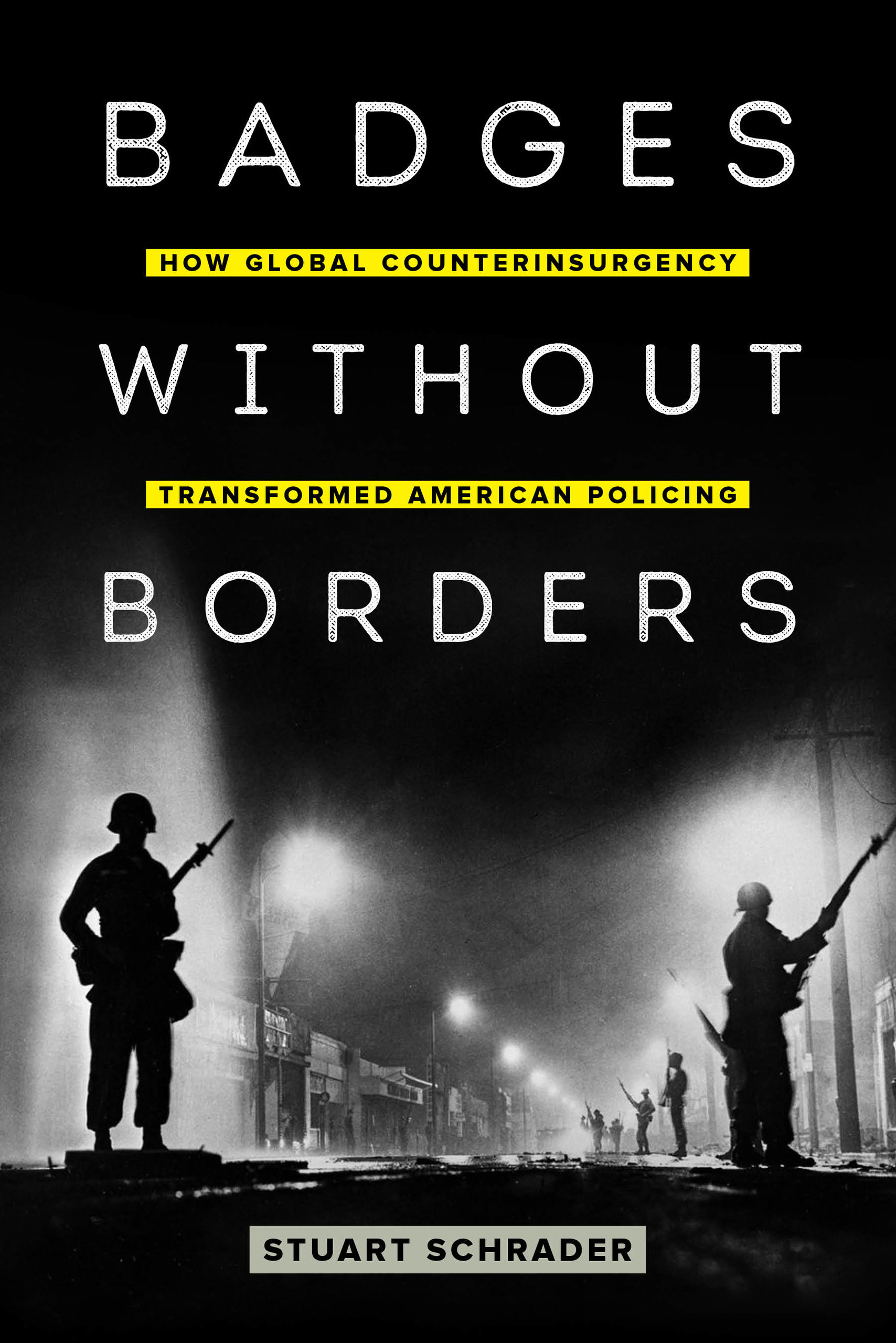Stuart Schrader’s Badges Without Borders explains how and why policing and counterinsurgency morphed into each other. Focused on the peak years of the Cold War, roughly the 1950s through the early 1970s, his analysis ranges across the globe, tracing the complex connections that linked US crime-fighters to their allies abroad. Some were police chiefs or policymakers, others military officials or academics. Working across institutional divides and international borders, they honed a model of policing that sought, above all, to maintain order.
This is a messy story, since those connections flowed in multiple directions simultaneously. Cops in US cities used technologies, such as the handheld radio and CS gas, that had first been deployed in war zones abroad. US soldiers in Vietnam and elsewhere drew upon techniques police had pioneered in New York, Kansas City, and Los Angeles to transform local constabularies into effective and efficient forces. US-based police training academies produced thousands of graduates who carried with them lessons American cops had learned at home. Meanwhile, in official circles, policymakers and academics tended to conflate — and often exaggerate — the supposed threat of mass crime and communism, while urging the same solutions for both.
To distill meaning from this messiness, Schrader has assembled and interrogated a vast archive. He’s examined legislation and official documents, speeches and television programs, police manuals and training materials, corporate advertisements and think-tank theses. Drawing on these sources, Schrader makes clear that US policing cannot be understood apart from the United States’ Cold War crusade to thwart leftist insurgencies.
Other scholars have tackled this topic. Historian Jeremy Kuzmarov’s Modernizing Repression, for instance, explained how US policymakers used police training for Cold War aims, launching far-reaching efforts to modernize and militarize the constabularies of dozens of foreign countries. Kuzmarov’s story was about power projection. Simply put, US police and policymakers exported repression around the world.
But Schrader is after something else. He’s interested not so much in the projection of American policing techniques, but instead in their circulation. Throughout the book, he holds the United States in constant view alongside those far-flung locales where American policing strategies migrated. His story documents how domestic anti-crime policies evolved in a transnational sphere of exchange and collaboration, revealing surprising links between domestic and overseas developments.
